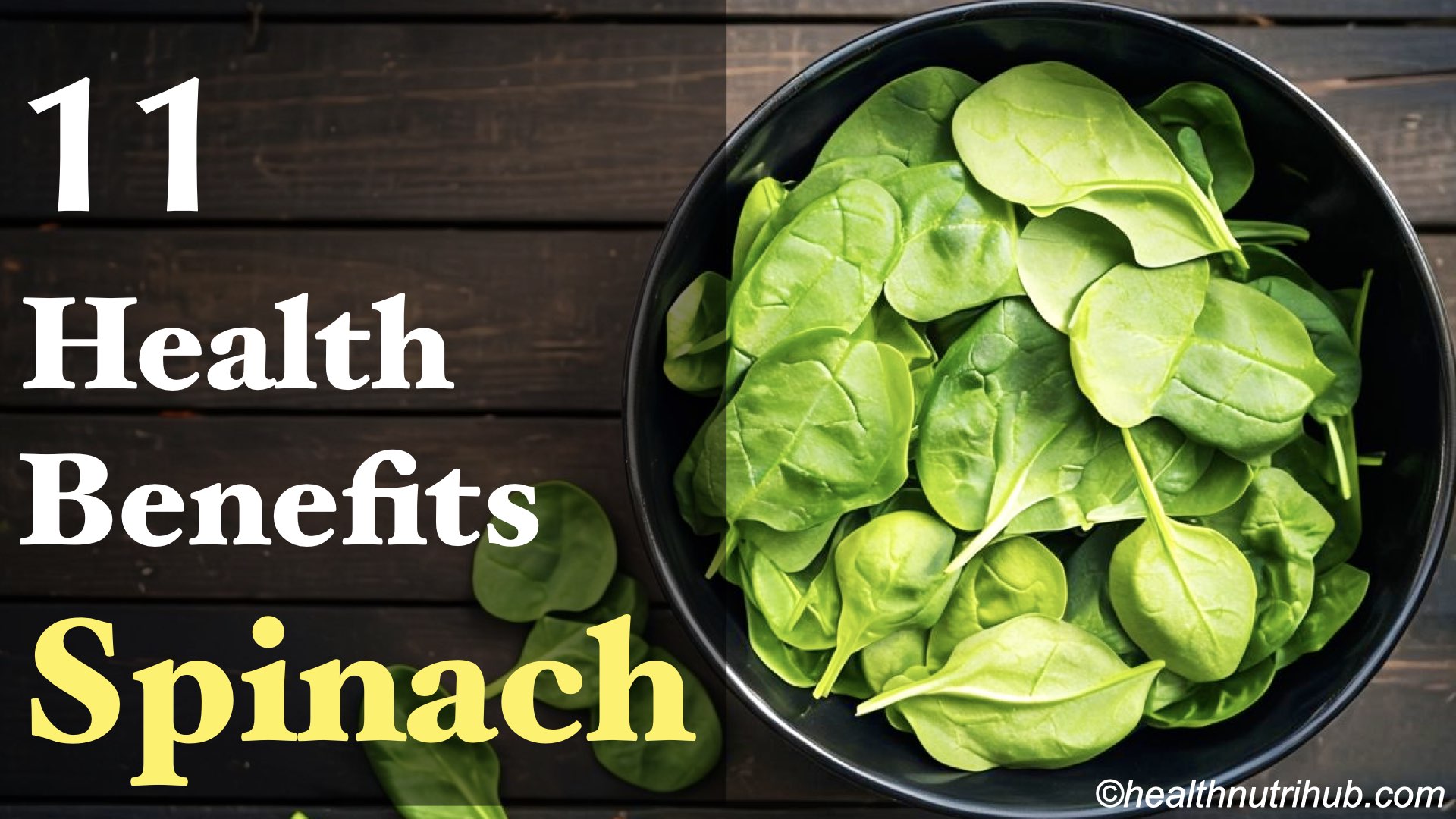Introduction to Kale
Kale is a leafy green vegetable belonging to the Brassica family, similar to broccoli, cauliflower, and cabbage. It’s known for its curly leaves and dark green color but can also be found in varieties like Lacinato and Red Russian. This nutritious vegetable has been cultivated for over 2,000 years. It originated in the eastern Mediterranean and Asia Minor, now gaining popularity worldwide due to its health benefits. Top 10 Superfoods to Boost Metabolism Naturally
Nutritional Profile of Kale
- Rich in Vitamins: Kale is loaded with vitamins, particularly Vitamin K, Vitamin A, and Vitamin C. These vitamins are essential for maintaining healthy bones, skin, and immune function.
- Packed with Minerals: This leafy green contains vital minerals like calcium, magnesium, potassium, and iron. These minerals support bone health, muscle function, and oxygen transport in the blood.
- High in Antioxidants: Kale boasts potent antioxidants such as quercetin and kaempferol, which help fight oxidative stress and reduce inflammation.
- Contains Fiber: A high fiber content makes kale great for digestive health, helping to maintain regular bowel movements and support gut health.
- Low in Calories: Kale is low in calories and fat, making it an excellent addition to weight management diets without sacrificing nutritional value.
- Provides Plant-Based Omega-3s: It contains alpha-linolenic acid (ALA), a type of omega-3 fatty acid beneficial for heart health.
- Source of Protein: While not a high-protein food, kale does provide a modest amount of plant-based protein, contributing to muscle maintenance and repair.
Health Benefits of Kale
Below are a few of the health benefits of kale.
Kale for Heart Health:
- Rich in Antioxidants: Kale is loaded with antioxidants like quercetin and kaempferol, which help reduce inflammation and lower blood pressure.
- Cholesterol Management: The fiber content in kale can help lower bad cholesterol, keeping your heart healthy.
Anti-Inflammatory Properties of Kale:
- Omega-3 Fatty Acids: This leafy green contains alpha-linolenic acid, an omega-3 fatty acid that fights inflammation.
Kale for Eye Health:
- High in Lutein and Zeaxanthin: These are essential nutrients that protect against age-related macular degeneration and cataracts.
- Vitamin A Source: Kale is rich in beta-carotene, which the body converts into Vitamin A, essential for vision health.
Kale Benefits for Bone Health:
- Calcium and Vitamin K: Kale provides a good amount of calcium and Vitamin K, both critical for maintaining strong bones and preventing osteoporosis.
Kale in Diets for Pregnant Women
- Rich in Folate: Kale is an excellent source of folate, a vital nutrient that supports fetal brain development and helps prevent neural tube defects.
- High in Iron: It provides non-heme iron, which is essential for increasing blood volume during pregnancy and reducing the risk of anemia.
- Loaded with Calcium: Supports the development of strong bones and teeth for the fetus.
- Boosts Immunity: With its high vitamin C content, kale helps strengthen the immune system, which can be beneficial during pregnancy.
Kale Consumption for Elderly Men and Women
- Supports Bone Health: The calcium and vitamin K in kale are crucial for maintaining bone density and reducing the risk of osteoporosis.
- Improves Vision: Lutein and zeaxanthin in kale promote eye health, reducing the risk of age-related macular degeneration.
- Enhances Heart Health: Fiber and antioxidants in kale can help lower cholesterol levels and improve cardiovascular health.
- May Help Cognitive Function: Antioxidants and anti-inflammatory properties may contribute to better brain health in aging adults.
Benefits of Kale for Children
- Provides Essential Nutrients: Kale is packed with vitamins A, C, and K, which support growth and development.
- Encourages Healthy Eating: Introducing kale in children’s diets can help establish healthy eating habits early on.
- Easy to Incorporate: Kale can be added to smoothies, soups, and snacks, making it an easy and versatile option for children’s meals.
Potential Risks and Concerns
- Risks of Overconsumption: Eating too much kale, especially in raw forms such as smoothies or salads, might lead to digestive issues due to its high fiber content. It’s best to consume kale in moderation.
- Allergies and Interactions: Though rare, some individuals may be allergic to kale. Symptoms might include itching, swelling, or difficulty breathing. If you’re unsure about food allergies, consult with an allergist before adding kale to your diet.
- Concerns for Individuals with Thyroid Issues: Kale contains goitrogens, which might interfere with thyroid function by hindering iodine uptake. Those with thyroid conditions should monitor their kale intake and consider cooking it, which reduces goitrogenic compounds.
- Oxalate Content: Kale is high in oxalates, which can bind with calcium to form kidney stones in susceptible individuals. If you’re prone to kidney stones, it’s advisable to limit kale consumption.
Culinary Uses of Kale
Kale is a versatile leafy green that’s easy to incorporate into various dishes. Its earthy flavor and impressive nutritional profile make it a popular choice in healthy recipes. Here are some popular and easy ways to use kale in your meals:
Kale in Smoothies and Juices:
- Blend kale with fruits like bananas and berries for a nutrient-rich smoothie.
- Add kale to green juices for a boost of vitamins and minerals.
- Use fresh kale leaves to enhance the refreshing taste of your morning drinks.
Kale in Salads and Main Dishes:
- Massage raw kale with olive oil and lemon juice to soften it for salads.
- Mix kale with quinoa, nuts, and feta for a protein-packed salad.
- Sauté kale with garlic and onions for a tasty side dish.
Kale Chips and Snacks:
- Bake kale leaves with a little olive oil and sea salt for crispy kale chips.
- Season kale chips with chili powder or nutritional yeast for added flavor.
- Use kale chips as a healthy alternative to regular snacks.
Conclusion: Is Kale Right for You?
- Nutrient-Dense Superfood: Kale is rich in vitamins, minerals, and antioxidants, making it a powerful addition to a well-balanced diet.
- Supports Heart Health: Regular consumption of kale can help maintain healthy cholesterol levels and support heart health due to its high fiber content.
- Versatile Culinary Uses: Whether you blend it into smoothies, toss it in salads, or bake it into chips, kale is incredibly versatile and can fit into various meals.
- Consider Personal Health Needs: While kale is beneficial for most, those with certain health conditions like thyroid issues should consult healthcare professionals before increasing kale consumption.
- Ideal for Various Diets: Ideal for plant-based, vegan, and vegetarian diets, kale provides essential nutrients that may otherwise be difficult to obtain.
- Accessible and Easy to Prepare: Available year-round, kale is easy to find and requires minimal preparation, making it convenient for daily use.
- Sustainable Choice: Kale is a low-calorie and environmentally friendly food option that supports sustainable eating habits.
FAQ – Frequently Asked Questions about Kale
Below are a few of the frequently asked questions about kale.
What are the main nutritional benefits of kale?
Kale is rich in vitamins A, C, and K, fiber, antioxidants, and minerals such as calcium and potassium. These nutrients support immunity, bone health, and heart function.
Can kale help with weight loss?
Yes, kale is low in calories, high in fiber, and can promote satiety, making it an excellent addition to a weight loss diet.
Is it safe to eat kale every day?
Eating kale daily is generally safe for most people and provides numerous health benefits. However, balance it with other vegetables and consult a doctor if you have thyroid issues.
How should kale be stored to keep it fresh?
Store kale in a plastic bag in the refrigerator’s crisper drawer. It stays fresh for about one week. Wash and dry thoroughly before use.
Can pregnant women eat kale?
Yes, kale is beneficial for pregnant women as it is high in folate and iron. Always consult with a healthcare provider if unsure.
Does cooking kale affect its nutritional value?
Cooking can reduce some nutrients like vitamin C, but steaming or sautéing kale can help retain its nutritional benefits better than boiling.
Are there any side effects of eating kale?
Some people may experience bloating due to its fiber content. Those with thyroid problems should monitor intake and seek medical advice.
How does kale support heart health?
Kale contains fiber, potassium, and antioxidants, which can help lower blood pressure and cholesterol, supporting cardiovascular health.
Is kale suitable for a keto diet?
Yes, kale is low in carbs and high in fiber, making it a keto-friendly vegetable.
What are some easy ways to include kale in my diet?
Try adding kale to salads, smoothies, soups, or as a snack with kale chips. Its versatility makes it easy to incorporate into meals.
How does kale compare to spinach nutritionally?
Both kale and spinach are nutrient-dense, but kale is higher in vitamins C and K, while spinach has more iron and magnesium. Including both in your diet maximizes nutritional diversity.
Is it better to eat kale raw or cooked?
Eating kale both raw and cooked has benefits. Raw kale retains more vitamin C, while cooking can make some nutrients more absorbable and reduce oxalates.
Can kale boost the immune system?
Yes, the high levels of vitamin C and antioxidants in kale can help strengthen the immune system and protect against free radical damage.
What types of kale are available?
Common types include curly kale, lacinato (or dinosaur) kale, and red Russian kale. Each variety has a distinct texture and flavor profile suitable for different recipes.
How do I prepare kale to remove bitterness?
To reduce bitterness, massage kale leaves with a pinch of salt and a little olive oil. You can also blanch kale briefly in boiling water.
Can kale cause kidney stones?
Kale contains oxalates, which can contribute to kidney stone formation in some susceptible individuals. Moderation is advised if you have a history of stones.
What is the environmental impact of kale farming?
Kale is a sustainable crop that has a relatively low environmental footprint compared to other vegetables, requiring less water and fertilizers.
Is kale suitable for people with food allergies?
Kale is generally hypoallergenic, but it’s always wise to introduce it gradually and watch for any adverse reactions, especially if you have known food allergies.
Can I grow kale at home?
Yes, kale is easy to grow in home gardens and containers. It thrives in cooler climates and requires minimal care.
What’s the best time of year to buy kale?
Kale is available year-round, but it peaks in the fall and winter months, when it tends to be the freshest and has a slightly sweeter taste.
Reference
In writing this article, various reputable sources were reviewed to ensure the information provided is accurate and up-to-date. For an in-depth understanding of kale’s nutritional benefits and potential health advantages, one notable reference is the article by Brianna Elliott, RD, titled “9 Health Benefits of Kale” from Healthline. This resource offers a comprehensive look at the key nutrients found in kale and their impact on health. Access the full article here: Healthline – 9 Health Benefits Kale
Disclaimer: The information provided in this article is for educational and informational purposes only and is not intended as medical advice. Please consult with a healthcare professional or registered dietitian before making significant dietary changes, especially if you have existing health conditions or concerns. The article makes no health claims about kale beyond its general nutritional benefits.










Pingback: Top 20 Healthy Vegetables: Nutrition & Health Benefits